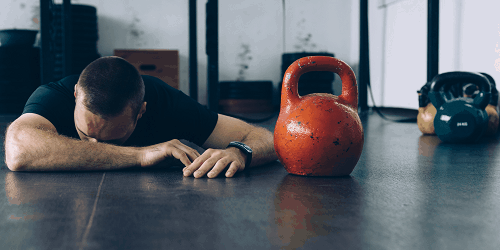
There is nothing worse than having your enthusiasm towards working out at the gym and your gym routine affected by an injury. People hurt themselves in many different ways when they work out.
The Most Common workout injuries are:
- Low back strain
- Rotator cuff injuries
- Wrist sprain
- Knee injuries
- Shin splint
- IT band issues
- Sprained ankle
- Tendinopathies

There Are Lots Of Different Ways That You Can Prevent Injuries when You’re Working Out At The Gym:
Always warm up and cool down:
Warming up helps to increase the heart rate gradually, before getting into a high intensity workout that demands a much higher heart rate. It also helps to loosen up various muscles and joints. On the other hand, cooling down helps to bring the heart rate back to its regular rate, thus maintaining the equilibrium in all cells of the body.
Ease into it:
When you begin a new exercise routine or start a new workout plan, make sure that you begin slowly. Then gradually build up the intensity, duration, and frequency.
Increase your training load each week by 10%
Your training load can be increased by adding weight, increasing sets or repetitions to your work out. For running, cycling or walking try increasing the distance, pace or adding steeper terrain (i.e. more hills). Don’t increase more than one variable (i.e. reps, weight or distance) per week.
Train the whole body each session
Instead of the traditional ‘shoulder day, chest day, leg day’ training split, take 1-2 exercises from each muscle group and combine them into one workout, 3-4 times a week. This will prevent excessive fatigue of smaller muscle groups and reduce your risk of injury. You can still complete the same amount of reps and sets per week as you did previously, just spread out over a longer time period (with reduced weight to start).
Have active recovery days
Instead of having complete rest days between sessions, help your body to recover quicker by staying active at a low intensity.
Active recovery can include activities such as walking, cycling, stretching and flexibility routines or foam rolling. Sleep is also important for recovery!

Vary your workout:
Don’t overuse one set of muscles. Frequently overloading the same muscle groups can lead to repetitive-use injuries, such as shin splints and tendinopathies. One way that you can prevent this from happening is to alternate the side of the road that you jog along. You can also consider doing different stability and strength work on different days.
Learn the correct techniques:
Exercising with improper techniques (Ex. Knees tracking in during a squat etc.) can lead to straining or overloading of different tissues beyond their capacity, this may lead to pain and injury. We recommend that you chat to your Physiotherapist (for corrective exercises) if a muscle or joint is bothering you, even if it’s just slightly bothering you, as this may lead to a bigger injury.

Rest and sleep:
Take 1 to 2 days off a week to rest. Rest days give your body a chance to recover between workouts. This also helps to prevent injuries.
Your Adelaide Physiotherapist can assist your structure and your training plan with the appropriate load progression (or regression). They can also assist in designing active recovery routines to complement your training.
Happy Workout!!
This blog was written by Nick Lagos Physio from the Adelaide CBD practice.
Search
Latest Blogs
Categories
- Aberfoyle Park (23)
- Adelaide CBD Central (39)
- Adelaide CBD East (37)
- Beverley (9)
- Blog (422)
- Burnside (30)
- Campbelltown (23)
- Christies Beach (23)
- Core Physio news (10)
- Falls & Balance (4)
- Group Exercise Rehabilitation (4)
- Hands on Physiotherapy (243)
- Hydrotherapy (7)
- Lifestyle & Health (43)
- Marion (19)
- McKenzie Spine Therapy (5)
- Melrose Park (18)
- Morphett Vale (23)
- News (120)
- Newton (3)
- Pain Management (36)
- Parkside (12)
- Physio Group Exercise (10)
- Physio Recommended Products (9)
- Plympton (12)
- Pre & Post Natal Physiotherapy (20)
- Sports Physiotherapy (27)